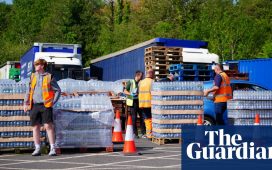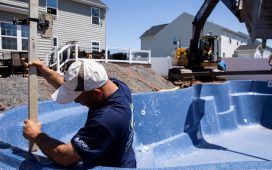In the 1990s, while enjoying a boom in air travel,
was worried. Then-current growth rates combined with the existing accident rate meant a major accident would be happening somewhere in the world every week by 2010. Air travel was by far the safest form of transportation and yet a conveyor of gruesome TV images would send a different message to passengers, employees and regulators. It was a future about which the industry could only say ick.
Boeing might have been more inclined to keep its mouth shut if it did not also see technology and human-factors practices on the horizon that could further reduce the accident rate, to the point where
Bill Clinton’s
transportation secretary was not laughed at when he proposed aiming for an accident rate of zero.
You can see where this is going in the wake of the
accident in Northeastern Ohio, in which mercifully no one died. Amtrak, by itself, experiences many worse years nowadays, in terms of passenger deaths, than the entire U.S. major airline industry.
Aircraft operate in three dimensions, can change directions, and share the skies with every kind of airborne object. Though an automobile is essentially restricted to two dimensions, it has vastly more freedom of movement than a train.
A train can go forward. It can also go backward. This would seem to be a remarkably inviting environment for automated safety improvements and yet such innovations have been slow to arrive.
Since 2008, the industry has been consumed with a federally mandated pursuit of “positive train control,” a novel and experimental technology that, by the time it was scoped out, could have been replicated on the then-new iPhone app at a fraction of the cost.
And PTC only addresses a subset of safety risks, when a locomotive driver ignores track-side signaling. It contributes nothing to ameliorating accidents like the one in the Ohio town of East Palestine, caused by a failed wheel bearing. Quite plainly, PTC’s goal was partly to preserve the engineer from obsolescence, as if the solution to air safety had been to find ways to keep jamming fallible humans into the equation.
News algorithms, er, reporters, have delighted in drawing a link to Norfolk Southern’s spending on dividends and share buybacks, in the apparent misconception that maintaining access to capital is a safety impediment. This is an upside-down picture of the world.
In fact, a well-supported theory holds that publicly traded transportation businesses are especially welcoming of safety regulation because it shifts responsibility for accidents—and the storms that follow—to government.
When an accident happens, carriers can say they were following the rules. Witness
Donald Trump,
and
Pete Buttigieg
upstaging the company’s contrite CEO this week as they played political badminton over the derailment. Notice how quickly dissolving into an indeterminate muddle was the accusation that Mr. Trump’s administration scuttled an Obama-era rule for high-tech braking. The rule wouldn’t have applied to the East Palestine train anyway. Nor is it clear electronic braking would have made any difference to the accident that actually happened.
Regulation can be useful in addressing free-rider problems. It can force industries to adopt more safety than their customers might be willing to pay for.
But highly prescriptive regulation, especially mandating mistimed technological investments, comes with risks of its own. It can distract from investments that actually recommend themselves on economic and technological grounds.
Example: Aren’t there better ways of monitoring wheel and axle failures than traditional wayside detectors placed 10 to 40 miles apart? Even more so given the ability to harvest energy from the train’s movement to keep cheap onboard digital monitors charged? Yes, such innovations exist.
Businesses necessarily are required to aim at multiple bogies at the same time. They have to compete for customers, for investors, for workers and for regulatory and political favor. In many cases, they might actually have a pretty good idea what they’re doing. When airlines lure travelers out of their cars with low fares, this improves travel safety too. When railroads capture more of the long-distance freight market from trucks, overall safety goes up because of road transport’s higher accident rate.
Though it will never be admitted, PTC was a misguided pursuit that soaked up a disproportionate share of industry attention and investment for the better part of two decades. In ways no less real for being unseen, it likely also contributed to the accident that happened when a handful Norfolk Southern tank cars rolled through East Palestine, Ohio.
Copyright ©2022 Dow Jones & Company, Inc. All Rights Reserved. 87990cbe856818d5eddac44c7b1cdeb8









